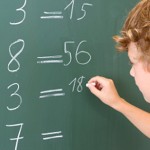Symmetry Worksheet and Explanation
We’ve structured this information to help children with their education. It is targeted at children in years 5 and 6 and the questions for the worksheet have been stripped from past papers. Having an understanding of symmetry is part of the primary school curriculum and children will deal with symmetry in both KS1 and KS2.
The Information below will give an overview of the topic and we have included a detailed worksheet with full answers. The worksheet includes 27 symmetry questions and is relevant for KS2 pupils approaching their SATS test.
Download Free Symmetry Worksheet – Questions
Download Free Symmetry Worksheet – Answers
If you are not ready to download the worksheets yet, then read on for some information about symmetry. This has provided to introduce the topics covered in the worksheet for those that might be unfamiliar but also as a quick revision tool for those that would like a quick refresher before accessing the worksheet.
Symmetry Explanation
Symmetry? What does it mean?
Symmetry is when a central line divides a shape and the shape is a same on both sides of the line. We most often here symmetry in reference to shapes. When a shape has a line of symmetry it is called symmetrical. Examples of symmetrical shapes are: circles, squares, rectangles, equilateral and isosceles triangles, and regular polygons. These examples can have multiple lines of symmetry.
An easy exercise to determine if a shape is symmetrical is to print out a copy of the shape and fold the shape is half to see if has any lines of symmetry; this approach is often used in KS1.
Symmetry Terminology
Below are some of the key terminologies that children may have to understand when encountering symmetry related questions.
- Reflection – a transformation in which a shape is reflected across a line.
- Non-Symmetrical – A shape that does not have any lines of symmetry. These are most often irregular shapes.
- Mirror symmetry – symmetry about a plane (mirror line) that divides the shape into two equal images
- Rotational symmetry – when an object is rotated around a central point a specific number of degrees and the object appears the same.
Symmetry in KS1 and KS2
During KS2, students will be able to identify lines of symmetry in 2D shapes and accurately draw the reflection of a shape in a mirror line given one side of the shape. By the end of KS2 children will be expected to draw shapes on a co-ordinates grid and reflect them once or more to produce a new shape in a mirror line. The concept of lines of symmetry is introduced in KS1.






